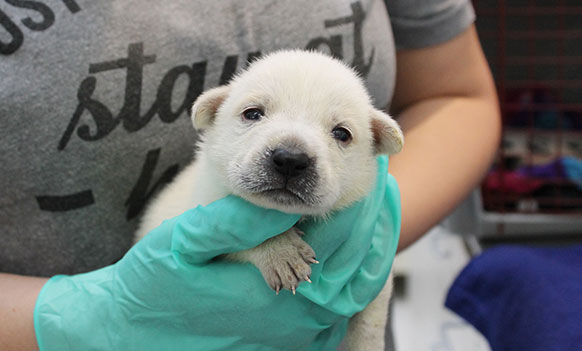News, ideas & inspiration from industry leaders

Texas-Sized Growth for Your Foster Program
According to Hill’s Pet Nutrition’s 2024 State of the Adoption Report, 1 in 3 people say they’d be more likely to adopt if foster-to-adopt were an option. Learn how Operation Kindness of Dallas is maximizing impact with their Foster First program
Hill’s Pet Nutrition recently released the 2024 State of the Adoption Report, and it got the field talking—particularly about foster programs. The Association’s Katherine Shenar sat down with Operation Kindness’ Kelly Furnas, Chief Operating Officer, and Stephani Coe, Senior Operations Manager, to discuss findings from the report and learn more about the Dallas-based organization’s innovative foster program. You can listen to their complete convo and read the highlights that follow.
Foster Program Success
Operation Kindness’ foster program is a shining example of how building trust with the community can lead to remarkable outcomes. Stephani Coe shared that in this last fiscal year, they placed 2,343 unique pets into foster care, marking a 35% increase from the previous year. This outcome was made possible by taking three strategic steps:
- Removing barriers to fostering
- Expanding medical foster care
- Introducing short-term programs like Foster First, which allows potential adopters to foster before making a final commitment
The 2024 State of Shelter Adoption Report highlighted that 1 in 3 people say they’d be more likely to adopt if foster to adopt were an option at their shelter—and you can see how this plays out with Operation Kindness’ Foster First program. This program alone has placed 527 animals into foster care with a 67% adoption rate, making up 6% of their overall adoptions and 42% of their large dog adoptions. Additionally, the program provides an extra layer of security and comfort for adopters—crucial in making the decision to adopt.
Best of all? It’s easy for folks to sign up. “Our foster team is going to make sure that they sign any needed paperwork,” says Coe, ”but that entire process, once they have decided this is a pet that they would like to take into care, is about 10 minutes. That’s 10 minutes to save a life.”
Busting Barriers
Yes, that’s beyond streamlined—but it’s important to understand that the wheels had already been set in motion. When COVID-19 forced animal welfare organizations to adapt quickly, Operation Kindness used the opportunity to streamline their program. Furnas and Coe realized the need to separate the intake and foster teams, giving more focus to foster care. The transformation included making fostering more accessible by removing unnecessary barriers. They overhauled their foster sign-up process, eliminating irrelevant questions and ensuring it is welcoming and inclusive. They view every visitor as a potential foster parent and provide necessary support and supplies to make fostering feasible.
The organization also fosters a sense of community among their volunteers. They host Foster Open Houses and training sessions, creating opportunities for social engagement and support. Their marketing team plays a crucial role in promoting foster opportunities through initiatives like Foster Fridays, making fostering appealing and accessible to the broader community.
The 2024 State of Shelter Adoption Report showed a slight decrease over the last year in awareness of fostering programs, from 54% to 52%. Yet Operation Kindness continues to attract and recruit fosters effectively. The report further recommends communicating that foster expenses are covered by the shelter, as 64% of survey respondents said they would be more inclined to foster. Operation Kindness messaging always stresses that their program provides supplies and medical care, ensuring that volunteering is not a financial burden for potential fosters.
Reflecting on their success, the team at Operation Kindness once again cite the importance of removing barriers and building trust with the community. “Really take a step back and look at your foster program, just like you should be looking at your adoptions program,” encourages Furnas. “From my level, every foster animal in a home is an empty kennel in the shelter for us to put another at-risk animal into. Think about all the people that want to help you by fostering, and if you’re getting in the way of them helping you, you’re not maximizing the total lifesaving that you could be doing.”
Learn More
Podcast: Grow Your Foster Program, Texas-Style
Tip of the Week: 2024 State of Shelter Adoption Report




This report was enlightening and reflects that OPK is leading the way on how to develop an effective fostering program. Well done Kelly and the rest of the staff involved with this program!